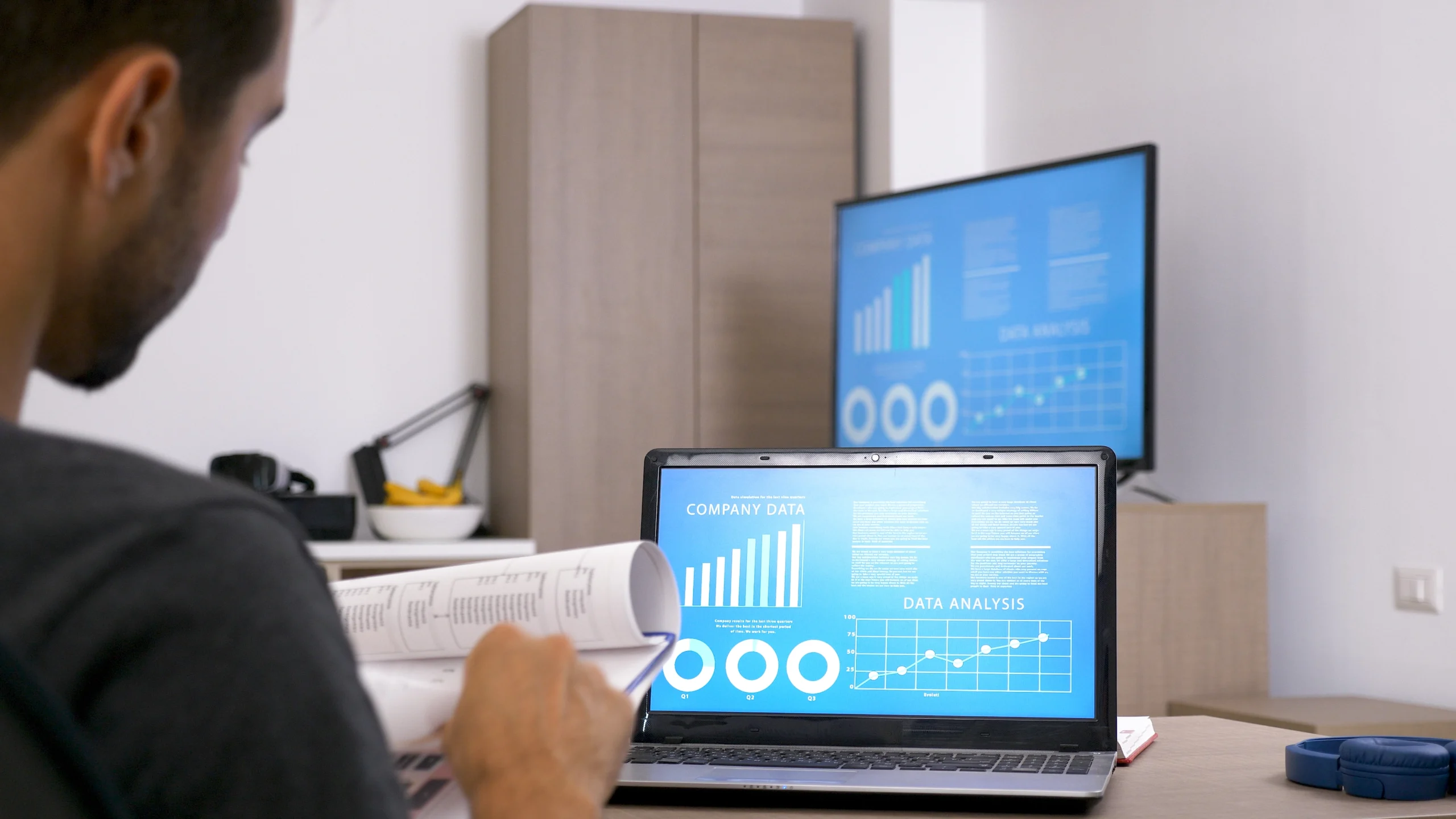In today’s fast paced world, businesses and organizations are constantly seeking ways to stay competitive through the integration of new technologies. However, adopting cutting edge technology comes with its own set of challenges, particularly when it comes to understanding the financial implications.
Technology Adoption Cost Analysis plays a crucial role in assessing the total investment required for implementing new technological solutions. By evaluating both the upfront and long term costs, businesses can make informed decisions, optimize their budget allocation, and ensure that the benefits of technological advancements outweigh the expenses.
This comprehensive analysis not only helps in mitigating financial risks but also maximizes the potential for long term success.
What is Technology Adoption Cost Analysis?
Technology Adoption Cost Analysis is the process of evaluating all the financial factors associated with integrating new technologies into a business environment. This includes direct expenses like software purchase or hardware costs, along with hidden costs such as training employees, adapting business processes, and ongoing maintenance.
Understanding the total cost of adoption ensures that companies are fully prepared to handle the financial implications of technology investments.
Key Components of Technology Adoption Costs
When businesses embark on adopting new technology, they must account for multiple cost factors. These include:
- Initial Investment Costs: This involves the purchase price of new hardware, software, or services.
- Implementation Costs: These are the expenses related to system integration, customization, and setting up infrastructure.
- Training Costs: Employees must be trained to use the new technology, which adds to the overall adoption cost.
- Maintenance and Support: Post adoption, companies need to account for ongoing technical support, software updates, and system maintenance.
Each of these components must be carefully calculated and analyzed to provide a clear picture of the financial commitment involved in adopting technology.
Why Technology Adoption Cost Analysis is Crucial for Businesses
Conducting a Technology Adoption Cost Analysis provides a clear understanding of the financial challenges and opportunities associated with technology integration. Without proper analysis, businesses may face unforeseen expenses or poor resource allocation.
By considering all cost factors, organizations can avoid financial strain and ensure that they are making a sound investment. This analysis also helps businesses evaluate whether the technology will result in cost savings, increased productivity, or a competitive advantage.
Benefits of Conducting Technology Adoption Cost Analysis
A well executed Technology Adoption Cost Analysis allows businesses to make informed decisions based on both short term expenses and long term benefits. Here are some advantages:
- Informed Decision Making: Helps in making the right choice regarding which technology to adopt based on a clear understanding of associated costs.
- Budget Optimization: By analyzing all possible costs, businesses can avoid overspending and allocate resources effectively.
- Risk Mitigation: Identifying hidden costs and challenges allows businesses to plan ahead and avoid costly mistakes during the adoption process.
What is Technology Adoption Cost Analysis?
Technology Adoption Cost Analysis is the process of evaluating the financial implications of adopting new technologies within an organization. It involves assessing both direct and indirect costs to ensure a comprehensive understanding of the financial commitment.
The analysis helps businesses make informed decisions by calculating the total cost of ownership (TCO) of the technology, taking into account implementation, training, maintenance, and potential upgrades.
Definition and Scope of Technology Adoption Cost Analysis
This analysis provides a detailed breakdown of all the expenses involved in integrating new technology into a company’s existing systems. It encompasses both upfront and ongoing costs, ensuring that no financial aspect is overlooked. The scope includes hardware and software costs, labor, training, and potential hidden expenses like system downtime or loss of productivity during the transition phase.
Key Objectives of the Analysis
The primary goals of Technology Adoption Cost Analysis are:
- Cost Assessment: Determining the initial and long term costs associated with the technology.
- ROI Evaluation: Estimating the return on investment to measure the technology’s effectiveness.
- Financial Planning: Helping organizations plan their budgets and resources for smooth adoption.
The Role of Analysis in Reducing Financial Risks
By performing a Technology Adoption Cost Analysis, businesses can foresee financial risks and prepare for unforeseen costs. It ensures that companies avoid budget overruns and helps mitigate potential financial losses during the technology adoption process. This analysis plays a vital role in identifying cost effective solutions and minimizing the risks associated with technological upgrades or changes.
Benefits of Understanding Both Direct and Indirect Costs
Understanding both direct and indirect costs is crucial for a successful technology adoption strategy. Direct costs like software, hardware, and licensing fees are easier to track, while indirect costs such as employee training, integration, and system downtime might be overlooked.
Recognizing both provides a more accurate picture of the total cost of adopting new technology and helps companies make better financial decisions.
Technology Adoption Cost Analysis: Key Components to Consider
Understanding the Technology Adoption Cost Analysis is crucial for businesses aiming to implement new systems effectively. Evaluating these costs helps organizations budget efficiently and minimize unexpected expenses. Here are the key components to consider:
Initial Investment Costs
The first phase of Technology Adoption Cost Analysis involves initial investments. This includes purchasing essential hardware like servers, computers, and networking equipment. Software expenses such as licensing fees and subscriptions are also significant. Additionally, businesses may need customized solutions, requiring configuration or tailored software development to meet specific needs.
Implementation Costs
Integrating new technology into an existing system requires careful planning. System integration costs, including compatibility adjustments, are essential in this stage. Consulting services and project management fees often contribute to implementation expenses. Testing and pilot phases are also crucial to ensure the technology functions properly before full deployment.
Training Costs
Employee readiness is vital for successful technology adoption. Investing in training programs ensures staff can efficiently use the new system. Training costs may include workshop sessions, online tutorials, or professional development courses. Additionally, onboarding new employees or upskilling existing staff may require extra resources.
Maintenance and Support
Ongoing maintenance ensures the technology remains effective. This includes regular software updates, hardware upgrades, and security patches. Businesses may also face costs for internal or outsourced technical support teams. Service contracts and warranties provide long term stability and reduce unexpected repair expenses.
Indirect Costs
While often overlooked, indirect costs are equally important. Disruptions during technology adoption can affect daily operations. Downtime, workflow interruptions, and reduced productivity may occur. Furthermore, employee resistance or adaptation challenges can delay the adoption process, requiring extra support.
Why Technology Adoption Cost Analysis is Crucial for Businesses
Budget Planning:
Effective Technology Adoption Cost Analysis plays a vital role in budget planning. Businesses must allocate resources wisely to avoid unexpected expenses. By assessing all cost components, companies can prevent financial surprises during the adoption process. Planning ahead ensures a smoother transition and better financial control.
Financial Forecasting:
Accurate financial forecasting is key when investing in new technology. Technology Adoption Cost Analysis helps predict future costs and potential savings. This analysis guides businesses in determining whether the investment aligns with their budget and long term goals. Forecasting tools can improve decision making and ensure financial stability.
Risk Mitigation:
Identifying hidden costs is crucial during technology adoption. Without proper analysis, businesses may face unexpected expenses that impact profitability. Technology Adoption Cost Analysis helps detect potential risks early, reducing the chances of over budgeting or underestimating financial commitments. By evaluating expenses upfront, businesses can avoid financial strain.
Improved ROI:
A well executed Technology Adoption Cost Analysis ensures better returns on investment. By understanding cost implications, businesses can align technology investments with their strategic goals. This process helps improve cost efficiency, enhance productivity, and drive growth. Evaluating expenses thoroughly helps ensure the technology positively impacts overall performance.
Steps in Conducting a Technology Adoption Cost Analysis
Conducting a Technology Adoption Cost Analysis is essential for businesses investing in new tools or systems. By following a structured approach, companies can evaluate costs accurately and make informed decisions. Here are five key steps to perform a successful cost analysis:
Identify the Technology and Its Purpose
Start by identifying the specific technology you plan to adopt. Understand its primary purpose and how it aligns with your business goals. Evaluate the problems this technology will solve and the improvements it can bring. Assessing these factors helps ensure the technology meets your organization’s needs and delivers value.
Estimate Direct Costs
Calculating direct costs is crucial in a Technology Adoption Cost Analysis. Identify expenses such as hardware, software, and licensing fees. Include setup costs, installation charges, and any required upgrades. Estimating these expenses accurately helps prevent unexpected financial surprises.
Estimate Indirect Costs
Indirect costs often go unnoticed but significantly impact the overall budget. Consider expenses like employee training, system integration, and change management. Factor in potential business disruptions during the transition period. Understanding these hidden costs ensures better financial planning.
Evaluate Long term Maintenance and Support
Assess the ongoing expenses associated with maintaining the technology. These may include software updates, technical support, and IT staff requirements. Ensuring long term sustainability is vital to avoid performance issues or unexpected downtime.
Analyze Total Cost of Ownership (TCO)
Calculating the Total Cost of Ownership (TCO) provides a clear picture of the technology’s overall financial impact. This includes initial costs, indirect expenses, and maintenance fees. Compare the TCO to potential returns, productivity gains, and competitive advantages. Evaluating these factors helps businesses make cost effective decisions.
Common Challenges in Technology Adoption Cost Analysis
Understanding Technology Adoption Cost Analysis is crucial for businesses planning to implement new systems or tools. Many organizations face key challenges that can impact cost estimation and budget planning.
1. Overlooking Indirect Costs
One major issue in Technology Adoption Cost Analysis is ignoring hidden expenses. Businesses often focus only on upfront costs while overlooking crucial factors like staff training, system downtime, and adaptation expenses. These indirect costs can significantly increase the total investment required.
2. Misestimating ROI
Accurately predicting the return on investment (ROI) is another challenge. Companies may struggle to forecast future savings, efficiency gains, or revenue growth. Misjudging these outcomes can result in poor financial planning and unexpected costs.
3. Underestimating Change Management Costs
Introducing new technology often demands organizational change. Employee resistance, productivity drops during transitions, and additional management costs can add strain to budgets. Effective change management planning is vital to ensure successful adoption.
4. Data Gaps and Inaccurate Assumptions
Incomplete data or flawed assumptions can weaken Technology Adoption Cost Analysis. Misjudging future technological trends, updates, or maintenance requirements may lead to costly errors. Accurate data collection and informed decision making are essential to improve budget accuracy.
Techniques and Tools for Conducting Technology Adoption Cost Analysis
When adopting new technology, understanding the financial impact is crucial. Various techniques and tools help businesses assess costs effectively. Here are key methods for performing a Technology Adoption Cost Analysis:
1. Cost Benefit Analysis (CBA)
The Cost Benefit Analysis (CBA) method evaluates both the tangible and intangible benefits of technology adoption. Businesses use this technique to compare the total costs with the potential gains. For example, investing in automation software may reduce labor costs while improving productivity.
CBA helps decision makers identify if the investment aligns with business goals. By analyzing measurable factors like revenue growth and efficiency, organizations can make informed choices when conducting a Technology Adoption Cost Analysis.
2. Total Cost of Ownership (TCO) Model
The Total Cost of Ownership (TCO) model calculates the full cost of adopting a technology over its entire lifespan. This framework includes expenses such as hardware, software, installation, maintenance, and support. Evaluating TCO ensures businesses understand hidden costs that may arise later.
By calculating these factors, companies can better predict long term expenses and manage their Technology Adoption Cost Analysis efficiently.
3. Return on Investment (ROI) Analysis
ROI analysis measures the profitability of adopting new technology. To calculate ROI, businesses compare net gains from the investment against total costs. A positive ROI indicates the technology adoption is financially viable.
ROI analysis is essential for budgeting, forecasting, and evaluating the true value of technological upgrades. It’s a vital step in any comprehensive Technology Adoption Cost Analysis.
4. Scenario Planning
Scenario planning helps businesses assess the financial impact of technology adoption under different conditions. By forecasting potential outcomes, companies can prepare for risks and uncertainties.
This technique allows decision makers to evaluate best case, worst case, and moderate scenarios. Scenario planning enhances strategic planning and strengthens a company’s Technology Adoption Cost Analysis process.
How Technology Adoption Cost Analysis Drives Strategic Decision Making
Technology Adoption Cost Analysis plays a vital role in guiding businesses toward smart and strategic decisions. By assessing costs, companies can align new technologies with their goals, secure budget approvals, and optimize investments. Here’s how cost analysis influences key decision making stages:
Supporting Strategic Alignment
A detailed Technology Adoption Cost Analysis helps businesses ensure that new technology investments align with their overall objectives. Companies often evaluate factors like performance improvements, operational efficiency, and long term growth. Aligning technology adoption with business goals reduces risks and maximizes returns.
Budget Approval Process
Clear and accurate Technology Adoption Cost Analysis simplifies the budget approval process. Stakeholders are more likely to approve funding when they understand the potential costs, expected ROI, and risk factors. Presenting a well supported cost analysis builds trust and justifies financial decisions.
Optimizing Investment Decisions
Businesses use Technology Adoption Cost Analysis to compare different solutions based on cost effectiveness. By evaluating upfront expenses, maintenance costs, and expected benefits, organizations can prioritize technologies that deliver the best value. This ensures smart spending and improved resource allocation.
Improving Future Technology Adoption
Conducting a thorough Technology Adoption Cost Analysis creates valuable insights for future investments. By reviewing past cost patterns, businesses can better predict expenses, identify cost saving strategies, and make informed decisions when adopting new solutions.
Case Studies and Examples of Technology Adoption Cost Analysis
Understanding the Technology Adoption Cost Analysis process is crucial for businesses planning to implement new systems or migrate to advanced solutions. Here are two detailed case studies highlighting cost evaluation strategies and lessons learned.
A Large Enterprise’s Cloud Migration
A prominent enterprise decided to migrate its entire IT infrastructure to the cloud. During the Technology Adoption Cost Analysis, the company evaluated various factors like:
- Initial Setup Costs: Expenses for cloud servers, data migration, and configuration.
- Training Costs: Employee training programs to ensure seamless adoption.
- Ongoing Expenses: Monthly cloud subscription fees and maintenance costs.
By analyzing these elements, the company discovered hidden costs related to bandwidth upgrades, data storage expansion, and additional security layers. Careful planning helped them minimize unexpected expenses and improve their ROI.
Small Business ERP System Implementation
A small retail business adopted an ERP system to improve inventory tracking and customer management. The business performed a Technology Adoption Cost Analysis to assess key expenses such as:
- Software Licensing Fees: Determining the best ERP plan based on company size.
- Customization Costs: Developing features tailored to business needs.
- Support and Maintenance: Estimating long term costs for updates and technical support.
The cost analysis revealed that investing in comprehensive staff training reduced future errors and improved system efficiency.
Lessons Learned in Technology Adoption Cost Analysis
From these case studies, businesses can learn key strategies for successful technology adoption:
- Identify Hidden Costs: Expenses like licensing upgrades, security tools, or unexpected maintenance can impact budgets.
- Plan for Training: Investing in employee education minimizes downtime and improves adoption success.
- Assess Long Term Value: Consider both upfront expenses and future savings to ensure cost efficiency.
FAQs:
Q1. What is Technology Adoption Cost Analysis?
Technology Adoption Cost Analysis is the process of evaluating all the financial implications involved in adopting a new technology.
It helps businesses assess both the direct and indirect costs associated with technology integration, including hardware, software, training, implementation, and maintenance costs. This analysis ensures organizations understand the full financial commitment required for successful technology adoption.
Q2. Why is Technology Adoption Cost Analysis important?
A Technology Adoption Cost Analysis is crucial for businesses to make informed decisions when adopting new technologies. It helps organizations avoid unexpected expenses, allocate resources efficiently, and ensure that the benefits of the technology justify the costs. This analysis also supports better financial forecasting, risk mitigation, and long term strategic planning.
Q3. What are the main components of Technology Adoption Costs?
The primary components of Technology Adoption Cost Analysis include:
- Initial Investment Costs: Software, hardware, and licensing fees.
- Implementation Costs: System integration, testing, and consulting fees.
- Training Costs: Employee training and onboarding expenses.
- Maintenance and Support Costs: Ongoing software updates, technical support, and system upgrades.
- Indirect Costs: Employee downtime, change management, and operational disruptions during adoption.
Q4. How does Technology Adoption Cost Analysis affect decision making?
A Technology Adoption Cost Analysis enables businesses to make data driven decisions by clearly outlining the financial commitment involved in adopting new technologies. It helps companies assess whether the potential return on investment (ROI) justifies the costs and ensures that the technology aligns with organizational goals, budgets, and long term strategies.
Q5. What are some common challenges in conducting Technology Adoption Cost Analysis?
Some common challenges include:
- Overlooking Indirect Costs: Costs such as training, downtime, and operational disruptions are often underestimated.
- Misestimating ROI: Predicting long term returns can be difficult and may lead to over optimistic projections.
- Data Gaps: Incomplete or inaccurate data can lead to poor cost estimates.
- Resistance to Change: Employees may resist new technologies, leading to additional costs in managing change.
Q6. How can businesses ensure accurate Technology Adoption Cost Analysis?
To ensure an accurate Technology Adoption Cost Analysis, businesses should:
- Collect detailed cost data from all departments involved in the adoption process.
- Consider both direct and indirect costs, including hidden expenses like change management and training.
- Use forecasting models such as Total Cost of Ownership (TCO) and Return on Investment (ROI) to predict future expenses and benefits.
- Involve key stakeholders to get a comprehensive understanding of all associated costs.
Q7. How can a Technology Adoption Cost Analysis help in managing financial risks?
By identifying and quantifying all costs upfront, a Technology Adoption Cost Analysis helps businesses minimize financial risks. It allows for better budget allocation, prevents unexpected expenses, and provides insight into the long term financial impact of technology adoption. This proactive approach ensures that organizations are well prepared for any challenges that may arise during the implementation phase.
Q8. How does Technology Adoption Cost Analysis benefit small businesses?
For small businesses, conducting a Technology Adoption Cost Analysis is crucial in maximizing limited resources. It helps them make cost effective decisions by carefully considering the financial implications of adopting new technologies. By accurately estimating costs and potential ROI, small businesses can ensure they are investing in technology that will drive growth without overextending their budgets.
Q9. What tools can help in conducting Technology Adoption Cost Analysis?
Several tools and frameworks can assist in performing a Technology Adoption Cost Analysis, including:
- Total Cost of Ownership (TCO): A framework for evaluating the overall cost of technology over its lifecycle.
- Cost Benefit Analysis (CBA): A method to weigh the benefits of technology adoption against the costs.
- Return on Investment (ROI) Calculators: Tools to help assess the financial returns expected from technology investments.
- Scenario Planning: A technique to forecast the impact of technology adoption under various conditions.
Q10. How does Technology Adoption Cost Analysis support long term business strategy?
A thorough Technology Adoption Cost Analysis supports long term business strategy by ensuring that the technologies adopted align with the company’s goals and financial capabilities. By considering the full scope of adoption costs and expected benefits, businesses can make technology investments that drive efficiency, innovation, and competitive advantage while minimizing financial risks.
Conclusion:
Technology Adoption Cost Analysis is an essential process for businesses looking to adopt new technologies effectively and efficiently. By thoroughly evaluating all direct and indirect costs associated with technology integration, companies can make informed decisions that align with their financial goals and long term strategies.
This analysis not only helps in budgeting and risk management but also ensures that the return on investment justifies the technological advancements. Ultimately, conducting a Technology Adoption Cost Analysis allows organizations to maximize the benefits of their technology investments while minimizing unforeseen expenses and disruptions.





